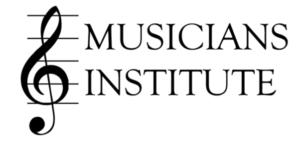
WARM-UPS FOR YOUR INSTRUMENTAL GROUP – PART 1 – WHY?
Jeff Cranfill
How does your usual day begin – I mean what are the first things you do? Perhaps it goes something like this – you open your eyes, jump to your feet and run 5 miles. As difficult, harmful, and crazy as that seems, that is a similar concept to beginning a rehearsal without some kind of warm-up. Professional players in professional ensembles are expected to be in top playing condition at the downbeat – physically and mentally. Such players know what they need to do to be ready, know how much time it takes, and they will make sure it is done.
In the world of volunteer players, the necessary preparations are done with varying degrees of success, and sometimes not at all. In order to apply all of their faculties in a rehearsal of 90 minutes or more, players need proper preparation and focus. Group warm-ups help make sure everyone is ready to play. In 3 to 5 minutes, a volunteer group set the course for a productive rehearsal.
Players walk in to rehearsal with life on their minds – dealings with family, their job, traffic, dinner, or the phone call they just finished. Everyone needs to be able to set aside distractions as best they can to get effective and efficient work done in rehearsal. A warm-up time begins a rehearsal with a specific occasion to set the issues of life aside for just a while and engage the mind.
Physical aspects of playing instruments well need to be addressed as early as possible as well. Air, embochure, bow grip, instrument position and posture are a few. While many of these are so ingrained that they are automatic, players need be able to get these all functioning well before the musical demands increase. Back to our waking up example – think of what you normally do when you first wake up, before you get to the responsibilities of life – yawn, stretch, pray, shower, get dressed, etc. Warm-ups are to a rehearsal what these are to your day.
There are several kinds of materials that can be used effectively for warming up a group. For many of us, time is tight in rehearsals. Warm-ups can take just a few minutes – we really do not have time not to warm up! Focus on listening (tone, intonation, balance, blend), musicianship (finesse, style, dynamics), key signatures (scales) and following the conductor. More specific technique studies are best reserved for sectionals, longer rehearsals, or individual practice.
Using short pieces, exercises or scales is ideal for beginning a rehearsal. Before the demands of many orchestra pieces, these warm ups give the orchestra an opportunity to focus on these aspects of performance. They help set the course for how they will play for the rest of the rehearsal.
Click for Warm-ups available from Jeff Cranfill Music
Next month –
Warm Ups For Your Instrumental Group – Part 2 – How
See also
Effective and Efficient Instrumental Rehearsals – Part 2
